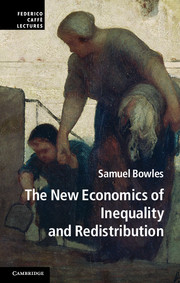Book contents
- Frontmatter
- Contents
- Illustrations
- Preface
- 1 The new economics of inequality and redistribution
- 2 The economic cost of wealth inequality
- 3 Feasible egalitarianism in a competitive world
- 4 Globalization, cultural standardization, and the politics of social insurance
- 5 Reciprocity, altruism, and the politics of redistribution
- 6 Conclusion
- Appendices
- Works cited
- Index
2 - The economic cost of wealth inequality
Published online by Cambridge University Press: 05 February 2013
- Frontmatter
- Contents
- Illustrations
- Preface
- 1 The new economics of inequality and redistribution
- 2 The economic cost of wealth inequality
- 3 Feasible egalitarianism in a competitive world
- 4 Globalization, cultural standardization, and the politics of social insurance
- 5 Reciprocity, altruism, and the politics of redistribution
- 6 Conclusion
- Appendices
- Works cited
- Index
Summary
The claim that high levels of wealth inequality degrade economic performance by precluding what otherwise would be productivity-enhancing solutions to coordination problems sounds abstract. But this is not just blackboard economics.
In the US South prior to the Emancipation Act (1863) it was said that cotton was king. But it was not until after the Civil War that cotton truly ascended to the throne among crops: In the quarter of a century following the demise of slavery, the production of cotton relative to corn (the main food crop) increased by 50 percent (Ransom and Sutch 1977). The intensification of the cotton mono-culture puzzled observers at the time and since, as it coincided with a slight downward trend in the price of cotton relative to corn. Moreover, there were no changes in the technical conditions of production that would have offset the adverse price movement; in fact, the growth of corn yields appears to have outpaced cotton yields during this period. Nor can the shift from corn to cotton be explained by changes in factor supplies. The Cotton South experienced a serious labor shortage following the war, which should have led some farmers to abandon cotton in favor of corn, as the latter was a much less labor-intensive crop.
- Type
- Chapter
- Information
- The New Economics of Inequality and Redistribution , pp. 34 - 72Publisher: Cambridge University PressPrint publication year: 2012



